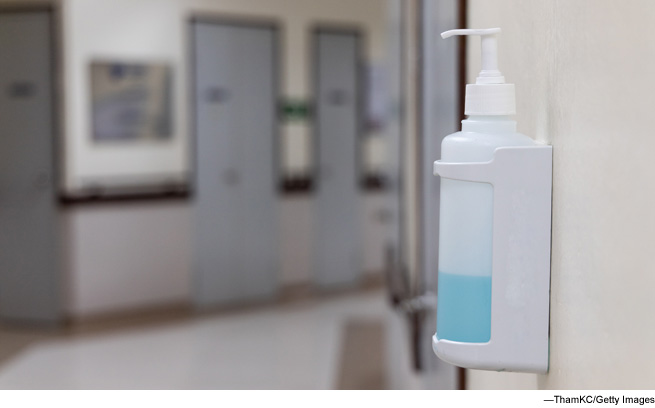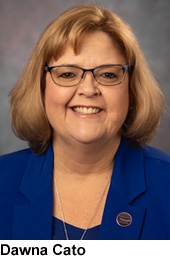Transformational leadership is key.

She didn’t know if promoting evidence-based practice for two weeks in a remote region of China would be enough to positively affect patient care. She was pleasantly surprised.
 Nurses in the United States are expected to have strong critical-thinking skills and to question traditional norms. Our platform for care delivery is based on best evidence, patient preferences, and clinical expertise, helping ensure up-to-date, safe, quality care.
Nurses in the United States are expected to have strong critical-thinking skills and to question traditional norms. Our platform for care delivery is based on best evidence, patient preferences, and clinical expertise, helping ensure up-to-date, safe, quality care.
As nurse educators, we teach best practices and provide evidence to support what we do and why a practice change is needed. We expect nurses to have a spirit of inquiry and a rationale for how they practice. This was my frame of reference when I extended my practice to China.
Background
It didn’t take me long to realize that my colleagues in Ningxia—an autonomous region in northwestern China located 30 miles from the Mongolian border—do not think like Americans and thus deliver care in a completely different way. My time in China began at Yinchuan Guolong Hospital, a well-established orthopedic facility that is engaged in transformational change to achieve U.S. standards of care. The transformation has been nothing less than exceptional.
Ningxia attracts few foreign visitors, and I didn’t know if my two-week contract would enable me to positively affect patient care in such a short time. My strategy was to observe the hospital’s care delivery practices and identify U.S. standards of care that my hosts might consider for adoption. That opportunity came sooner than expected. On my first visit, as I was rounding on the floors and watching nurses and physicians deliver postoperative care to patients with complex orthopedic and spinal diagnoses, I noticed that only rarely did they wash their hands, use hand hygiene gel, or take time to don gloves when changing soiled dressings.
How was I to approach this critical need for change in a way that would help ensure adoption? According to the Centers for Disease Control and Prevention, an agency of the U.S. Department of Health & Human Services, America’s healthcare providers continue to practice poor hand hygiene. I did not fully understand China’s deeply rooted, rule-based, hierarchical environment. How should I proceed?
Intervention
First, I discussed with the chief nursing officer what I had observed and recommended that the hospital supply alcohol-based antibacterial gel outside every room. In China, hospitals typically have a very high census and often house four to six patients per room. Many rooms do not have sinks or other provision for handwashing. Next, I provided education and evidence to support my claim about the importance of proper hand hygiene. (The hospital did not have a method for tracking infections and was unable to provide a hospital-wide infection rate.) Finally, I established the expectation of “gel in and gel out” for all providers and encouraged the nurses to assist in ensuring compliance.
Within the week, the dispensers I had requested were installed outside every room, a surprising response that elevated my ability to effect change. In addition to providing the rationale for proper hand hygiene, I shared best practices, using case studies and role modeling to establish expectations and hold everyone accountable, and also developed an activity to encourage compliance with the new requirement.
The nurses immediately embraced the education and practice change. When we performed a needs assessment, we learned that 98% of the nurses had requested information and education on infection control practices. The resistance to change that is commonly found in the United States was not evident in this particular Chinese healthcare setting. My presence and recommendations gave the nurses license to facilitate change, develop leadership skills, and improve patient outcomes.
A recent Triple Impact report from the U.K. noted: “Nurses around the world, however, have shared concerns about staffing problems, poor facilities and inadequate education, training and support. This can result in poor quality care. Moreover, nurses report that they are frequently not permitted to practise to the full extent of their competence; are unable to share their learning; and have too few opportunities to develop leadership, occupy leadership roles and influence wider policy” (p. 4). My going to China as a U.S. content expert sent a message to these Chinese nurses that they would encounter little resistance from the executive suite in their efforts to implement recommendations, and they took full advantage of the opportunity.
Outcome
That initial two-week consultation led to long-term engagement. It has been two years since my introduction to the hospital and its Chinese nursing workforce. We successfully implemented hand-hygiene training during onboarding and have hardwired these practices in care delivery areas. In addition, we have developed processes to track infection rates and reinforce expected behaviors.
Although this practice change has been nothing less than extraordinary, the hospital’s nursing workforce has embraced additional best practices introduced during my two-year immersion. These include the use of 1) Situation, Background, Assessment, and Recommendation (SBAR) for handoff reporting; 2) Acknowledge, Identify, Duration, Expectation, and Time (AIDET) for patient communication; 3) backboards for safe patient transfer; 4) patient armbands and two-patient identifiers; 5) timeout for operating room procedures; 6) whiteboards for communication; 7) error reporting; 8) processes for safe quality care from admission to discharge; 9) nurse-led councils; 10) engagement in research and publications; and 11) development of training for frontline leaders, preceptors, and specialty practices.
We have a long way to go, but momentum is strong. The nurses have acquired knowledge and applied what they have learned in their environment. This could not have been accomplished without a foundation of transformational leadership.
Transformational leadership
As we prepare to launch a new 600-bed hospital in Ningxia Hui Autonomous Region (NHAR), China, I am confident its patient population will be as impressed as I am by the hospital’s best-practice care delivery, influenced by the nursing leadership and frontline staff of Yinchuan Guolong Hospital. Our work aligns with the goal of the World Health Organization’s Nursing Now Campaign “to improve health by raising the profile and status of nursing worldwide.” It has been accomplished by empowering the nursing leadership with attributes of transformational leadership.
Transformational leadership is defined as a “style of leadership in which the leader identifies the needed change, creates a vision to guide the change through inspiration, and executes the change with the commitment of the members of the group.” The nursing leadership training at Yinchuan Guolong Hospital included content related to transformational leadership. In an article published in Nursing Administration Quarterly, my colleagues and I state that this leadership style “provides the opportunity for participants to capture the knowledge, skill, and attitudes necessary to affect patient care outcomes.” The nursing leaders and staff at this hospital have begun to “break down traditional norms and hierarchical structures.” As a result, they are empowered to practice as professional nurses and elevate their identity.
The World Health Organization reports that China has “embarked on the biggest health system reform the world has ever seen.” In our journal article, we state: “China’s investment in the development of primary and traditional Chinese medicine will require highly qualified practitioners and leaders who are equipped with competencies necessary to develop and sustain integrated health systems.” Nurses in China have embraced and moved best practices forward during a critical time of internal and external disruptive change.
Evidence-based practice has significantly improved patient outcomes and influenced nurses to adopt a spirit of inquiry and question traditional norms. They have discovered a world of professional nursing practice that goes beyond task-based care. In this discovery mode, nurses seek information and recommendations regarding practices they have silently questioned for decades.
As a visiting expert from the United States, I am impressed by the adaptability and resilience of our international nurse colleagues and encouraged by their enthusiasm. I am confident they will continue to improve care delivery through the use of transformational leadership. RNL
Dawna L. Cato, PhD, RN, a nurse consultant with TTPP Nurse Consulting, works collaboratively with healthcare professionals and organizations—using an evidence-based approach—to design, implement, and evaluate programs to meet identified goals and objectives.